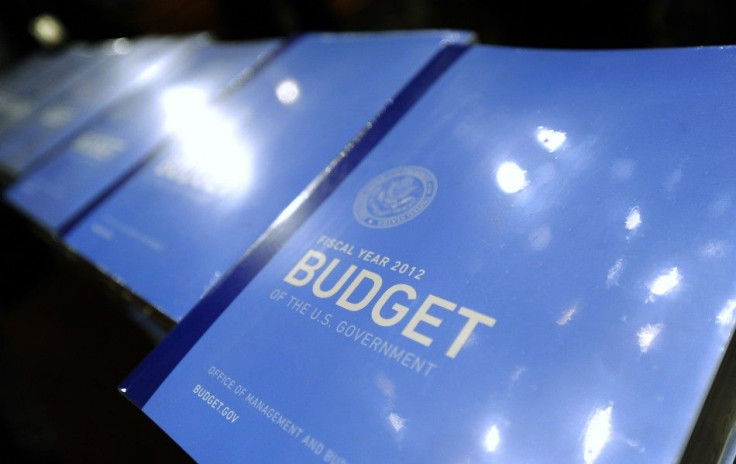U.S. Budget Deficit: Five Things You Didn?t Know
Analysis

The recent federal budget fight between the Democrats and Republicans in Washington over the debt ceiling, true to form, yielded "more heat than light," once again, regarding the true sources of the budget deficit.
Hence, without further adieu, here's the U.S. budget situation in a summary -- five things you didn't know about the budget deficit, sans the rhetoric and the hype:
1. The $1 trillion budget deficit era started under President George W. Bush.
Because trillion-dollar budget deficits started only as recently as President George W. Bush's last year in office, it seems like the era of gargantuan deficits has present-day policy-maker roots. The current year deficit, fiscal 2011, is projected to be $1.48 trillion, according to the Congressional Budget Office.
In truth, the $1.48 trillion deficit stemmed from policy decisions stretching back more than 10 years. Individually, each action by the the executive branch and Congress, aside from the U.S. business cycle (which no one can control), represented a significant allocation of resources -- a major policy decision. Moreover, what's astonishing during the 10-year period is that public officials in Washington were not successful at either raising taxes or cutting other spending along the way to pay for the new initiatives.
The last time the U.S. Government ran a budget surplus was in fiscal 2001, President Bill Clinton's last approved budget, when the federal government ran a $127 billion surplus. The 2001 budget marked the fourth consecutive annual budget surplus by the Clinton administration.
2. The second biggest source of the budget deficit is the 2001 Bush individual income tax cut and the subsequent tax cut in 2003.
In 2000, individual income taxes totaled about $1 trillion; corporate income taxes, $207 billion. Had the 2001 tax cut not occurred, and tax payments just kept pace with inflation (likely, given that the U.S. economy was expanding for much of the period), in 2011 individual income taxes would have totaled $1.275 trillion; corporate income taxes, $263 billion. Impact: increased deficit by about $330 billion in 2011.
3. The biggest source of the deficit is the 2007-2009 recession, which both substantially reduced the U.S. workforce's size -- lowering federal income tax revenue and increasing outlays for social supports.
The Great Recession really hurt the nation's fiscal picture, by lowering federal income tax and related revenue, and via increasing spending for unemployment compensation, food stamps, and other programs. Impact: increased deficit by about $400 billion in 2011, according to the Center on Budget and Policy Priorities, a liberal think tank based in Washington.
4. Defense spending for the Iraq/Afghanistan wars and for national security programs following the 9/11 terrorist attack have substantially increased the budget deficit.
Regardless of how one feels about the foreign policy effectiveness of the Iraq or Afghanistan wars, which were initiated by the Bush Administration, the unique fiscal dimension of those defense actions is that all the money for them has been borrowed. As New York University Economist Nouriel Roubini points out, the nation has borrowed to fund its troops, when the norm is to increase taxes to pay for it. When added to borrowing for civilian programs, the combination amounts to a borrowing for both "guns and butter," Roubini said -- an unsustainable policy. Impact: increased deficit by $191 billion in 2011.
5. TARP and fiscal stimulus did temporarily add to the deficit, in the short-term.
The nation experienced the simultaneous contraction forces of the financial crisis and a deep cyclical recession, and programs were needed to support both financial system-critical institutions, and other large institutions whose cessation would have magnified unemployment (General Motors being a prime example). Impact: increased deficit by about $30 billion in 2011.
Public Policy/Economic Analysis: Therefore, after eliminating the impact of the Bush tax cuts, the effects of the Great Recession, Iraq/Afghanistan War spending, and TARP/fiscal stimulus programs, which account for about $951 billion of the deficit the "normalized" deficit is about $510 billion.
Can Congress find cuts and decrease spending outside of the initiatives described above? It is, and the Heritage Foundation, a conservative think tank based in Washington, has outlined $343 billion in what the group calls "available spending cuts."
The view from here argues that some of Heritage's recommended cuts seem more-achievable in the current poliical climate than others: assuming 25 percent are achievable, that would yield another $125 billion in savings, which would reduce the deficit to about $385 billion.
To be sure, $385 billion is still a considerable amount of money. As a U.S. senator once famously said, "A billion here, a billion there, and pretty soon you're talking about real money."
But in the context of a roughly $3.7 trillion federal budget, Congress, and now the recently-formed 12-member, bipartisan super committee should, via a mix of discretionary spending cuts, entitlement adjustments, and tax increases -- including tax code reform that eliminates loop holes, be able to close that gap over a 10-year period.
© Copyright IBTimes 2024. All rights reserved.





















